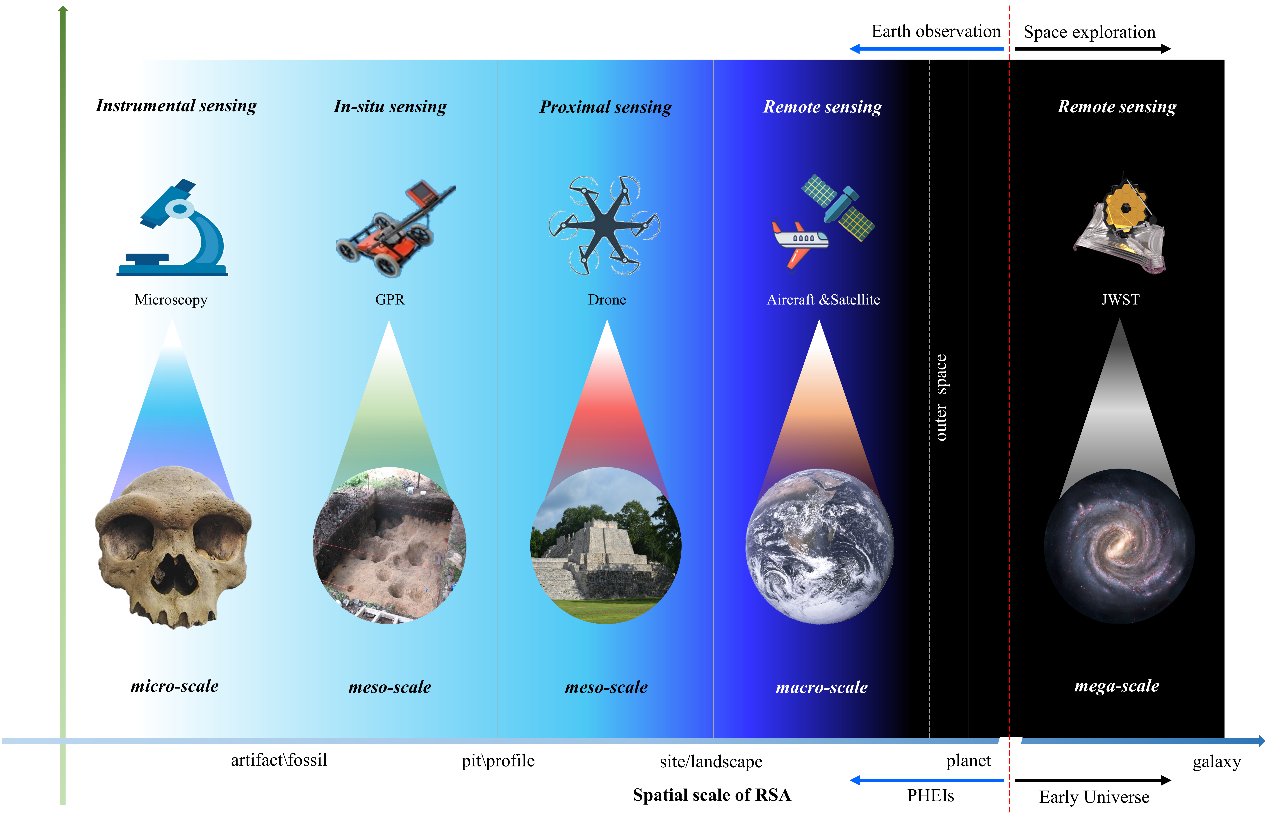Uncovering Ancient Mysteries from Space: How Remote Sensing is Transforming Archaeology
Jun 05, 2024
In the realm of archaeology, the evolution of remote sensing (RS) technology has been pivotal, giving rise to the field of Remote Sensing Archaeology (RSA). Over the past century, RSA has made remarkable strides, integrating various RS techniques to interpret data from ancient human activities, shedding light on cultures, practices, and human history.
A study published in the Remote Sensing of Environment conducted a bibliometric analysis spanning from 1992 to 2022, which reviewed and described the transformative influence of a century of advancements in RSA.
The study benefited from the work of the scientists at the International Centre on Space Technologies for Natural and Cultural Heritage (HIST) under the auspices of UNESCO. The centre is hosted by the Aerospace Information Research Institute (AIR) with the Chinese Academy of Sciences (CAS), aiming to advance our understanding of Earth's deep past through the utilization of space technology.
This review explored the broad history of this research, with particular focus on recent developments of remote sensing in combination with big data. The evolution of RSA can be categorized into three stages: RS and archaeology (RS&A), RS for archaeology (RS4A), and finally, RSA. From the dominance of aerial RS in the pre-1980s era to the revolutionary advancements facilitated by technologies like LiDAR and SAR since the 1980s, RSA has undergone significant transformations, marking a paradigm shift towards scientific inquiries in archaeology.
Looking ahead, the convergence of RS with Artificial Intelligence/Machine Learning (AI/ML), Big Data, and other digital technologies holds the promise of further innovation in RSA. AI-driven archaeological interpretation, Big Data (BD)-fueled archaeological discoveries, Cloud or Cyber Infrastructure (CI)-enabled archaeological research, and Digital Twin (DT)-empowered digital transformation are some of the recent advancements shaping the future of RSA.
The study stated that the emergence of Space Archaeology (SA) as a transformative approach to archaeological prospecting represents a qualitative leap in the field. SA integrates advanced space technologies and cutting-edge digital advancements like AI, BD, CI, and DT, aiming to comprehensively understand spatial dynamics and human interactions with the environment throughout history.
The study concluded that the 100-year journey of Remote Sensing Archaeology (RSA) has achieved significant milestones, particularly with the integration of AI and Big Data technologies. According to Prof. WANG Xinyuan, the corresponding author of the study, transitioning from RSA to Space Archaeology (SA) requires "interdisciplinary collaboration" and "a shift towards science-oriented geospatial thinking."
"SA represents a paradigm shift in both implications and methodology," states Dr. LUO Lei, the first author of the study. "It leverages space technologies to uncover hidden mysteries, ushering in a new era of archaeological exploration."

Spatial scale of RSA. (Image by AIR)
Contact: luyq@aircas.ac.cn



News & Events